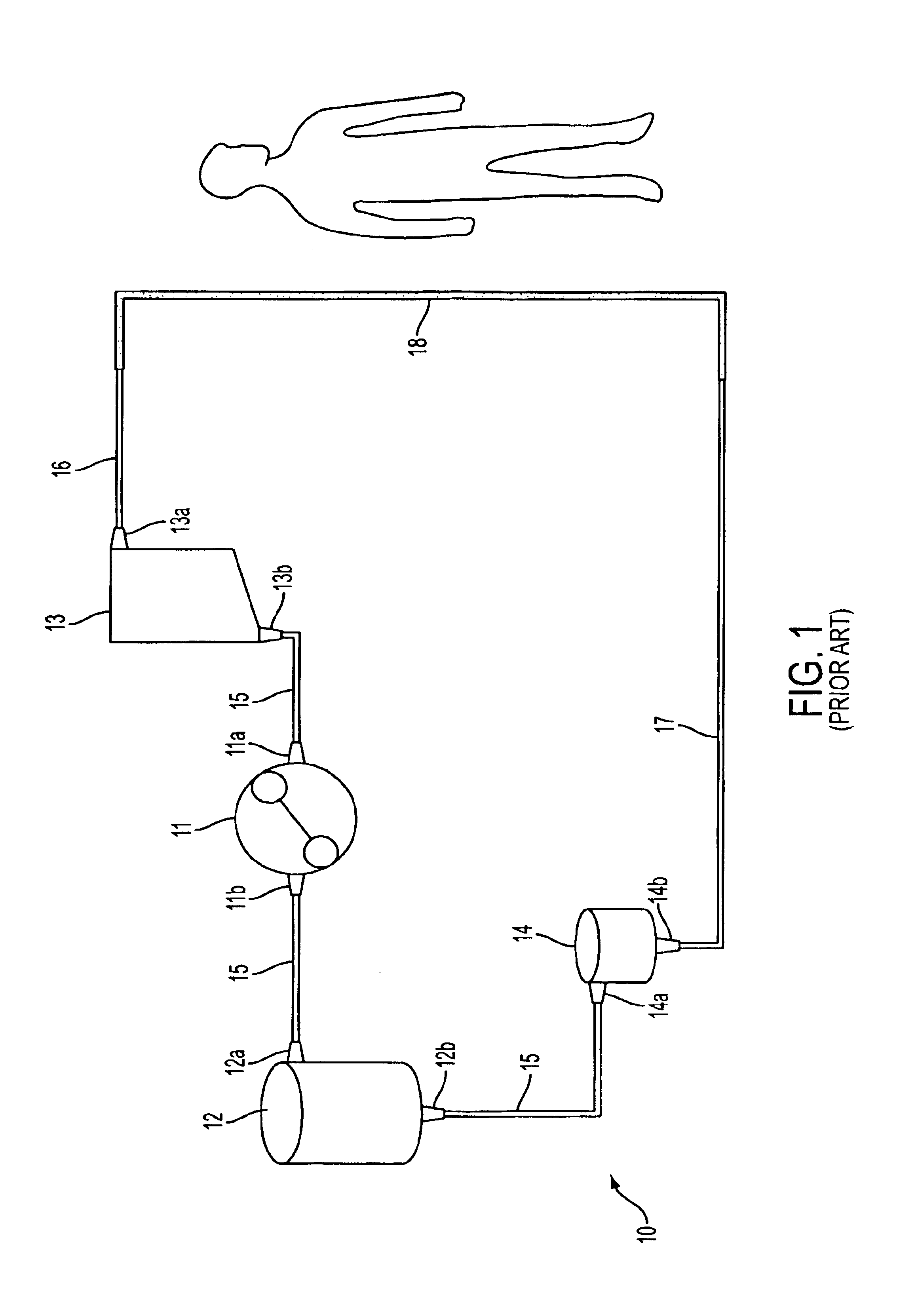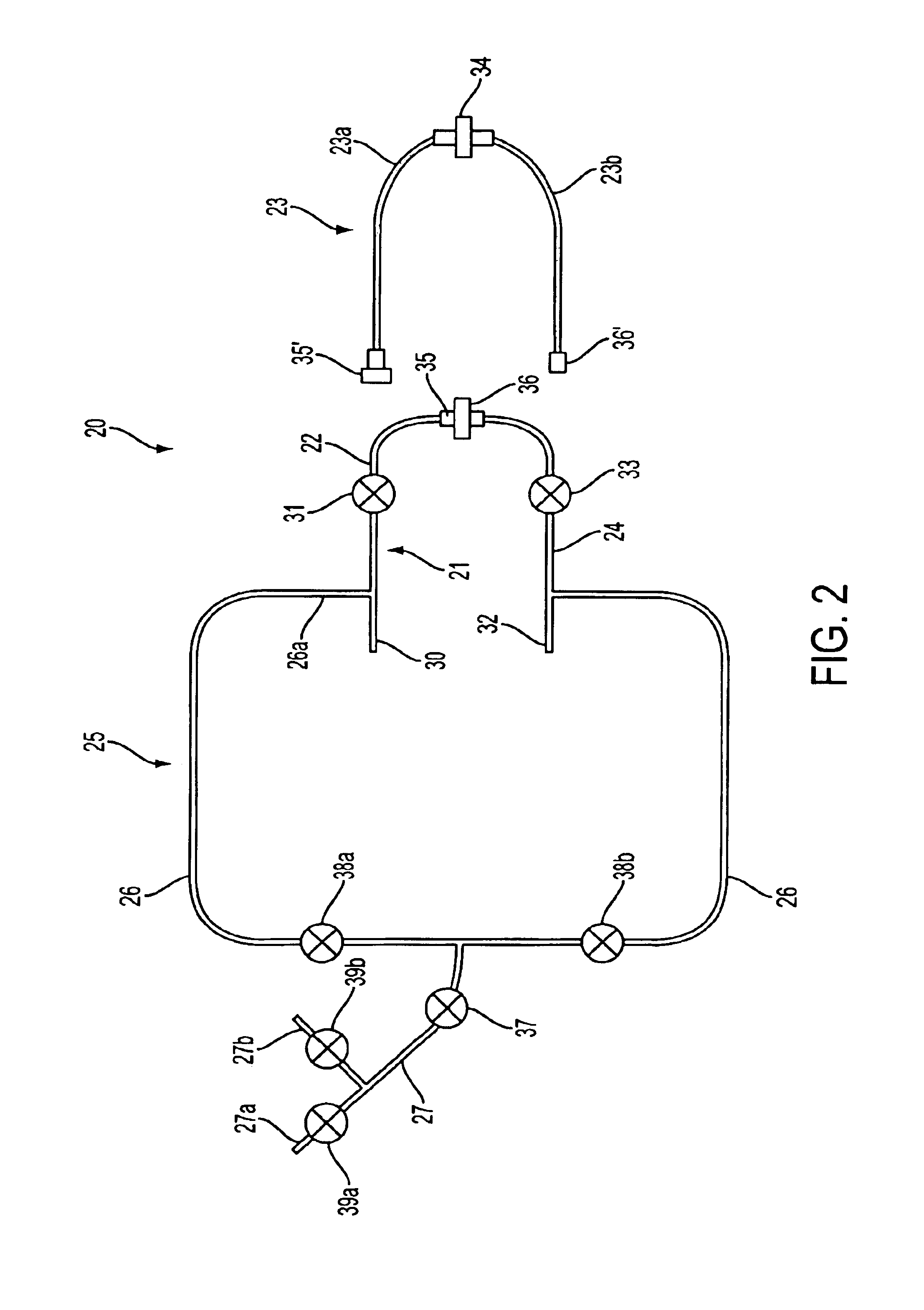Tubing set for blood handling system and methods of use
a technology of a blood handling system and a tubing set, which is applied in the field of tubing sets, can solve the problems of reducing the concentration of critical blood components to undetected low levels, affecting the safety of patients, so as to reduce the priming volume and internal surface area, reduce the risk of blood donors being exposed to diseases carried by donors, and reduce the risk of platelet activation and hemodilution.
- Summary
- Abstract
- Description
- Claims
- Application Information
AI Technical Summary
Benefits of technology
Problems solved by technology
Method used
Image
Examples
Embodiment Construction
[0035]Referring to FIG. 1, a typical previously known commercial blood handling system 10 is described. System 10 comprises arterial pump 11, oxygenator 12, venous reservoir 13 and arterial filter 14 coupled to each other by tubing 15. To assemble such a system, the perfusionist typically removes components 11-14 from separate sterile bags, or separate compartments of a sterile tub, and then manually attaches the tubing to ports 11a, 11b, 12a, 12b, 13a, 13b and 14a, 14b, to interconnect the components and to form venous line 16 and arterial line 17. Blood handling system may in addition include a heat exchanger, recirculation line, etc. (not shown).
[0036]Typically, components 11-14 may be pole-mounted or coupled to drive units disposed in bays of the perfusion station, causing the ports of the various components to be awkwardly positioned. In addition, the conventional method of pushing the tubing over barbed or ribbed ports can be quite difficult to accomplish while maintaining the...
PUM
 Login to View More
Login to View More Abstract
Description
Claims
Application Information
 Login to View More
Login to View More - R&D
- Intellectual Property
- Life Sciences
- Materials
- Tech Scout
- Unparalleled Data Quality
- Higher Quality Content
- 60% Fewer Hallucinations
Browse by: Latest US Patents, China's latest patents, Technical Efficacy Thesaurus, Application Domain, Technology Topic, Popular Technical Reports.
© 2025 PatSnap. All rights reserved.Legal|Privacy policy|Modern Slavery Act Transparency Statement|Sitemap|About US| Contact US: help@patsnap.com



